How to Grow and care for Different Types of ferns
Learn all about growing ferns, from different types of plants to tips for planting and caring for ferns.
Ferns have been a popular plant for many years, and they are one of my favorite plants for the shade. They are easy to grow and come in a lot of different varieties. As a result, there is a fern plant for every taste and space.
Whether growing ferns outdoors in your garden or indoors as a houseplant, ferns bring a tropical ambiance to any area. Ferns are known for their delicate-looking fronds and are great for adding layers of greenery and texture to your garden or landscaping.
In this post, I will share many tips for growing ferns, including where they grow best and how to plant and care for them. But, first, let’s get to know some of the different fern plants, as each variety can have very different characteristics.
Types of Fern Plants
Many types of fern plants have a variation in size and shape.
This roundup includes some of the most popular types of ferns and some unique fern plants I have growing in my garden.
Sword Fern / Boston Fern
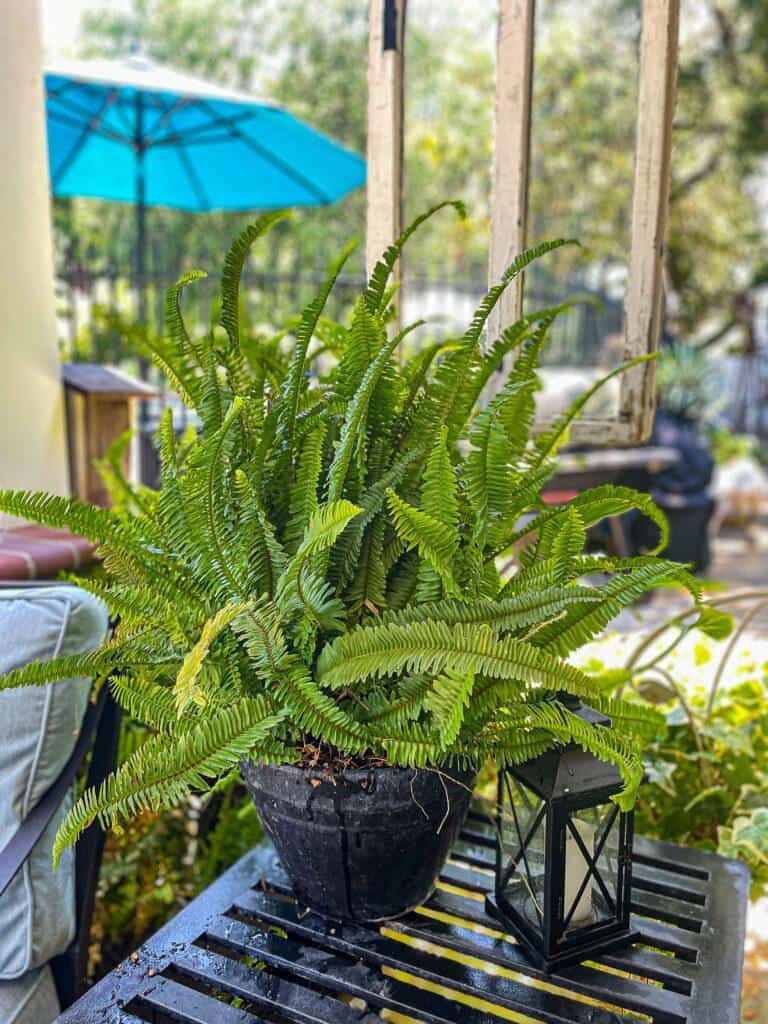
A popular houseplant, sword ferns, also called Boston ferns, have long, sword-like fronds. They are native to tropical climates and like a humid environment but are pretty hardy and can also survive droughts. I have several of these ferns in pots on my back patio. I also like stepping out my back door and clipping a few fronds to use in my fresh flower arrangements.
Angel Vine Fern
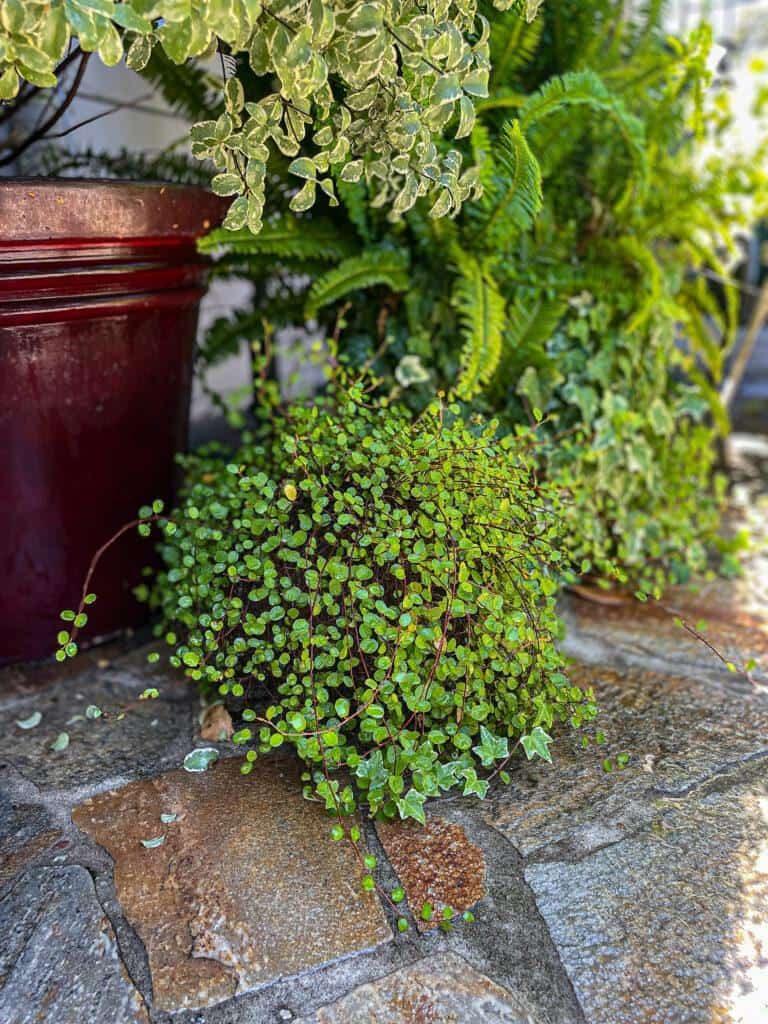
Growing a potted angel vine (Muehlenbeckia complexa) can be easy to grow if you provide the fern with partial to full sun. This New Zealand native only grows about 6 inches (15 cm.) tall but quickly spreads outwards with any airy appearance due to its wiry stems and small shiny leaves. I adore this delicate type of fern and have several of them growing in pots around my home.
Tree Fern
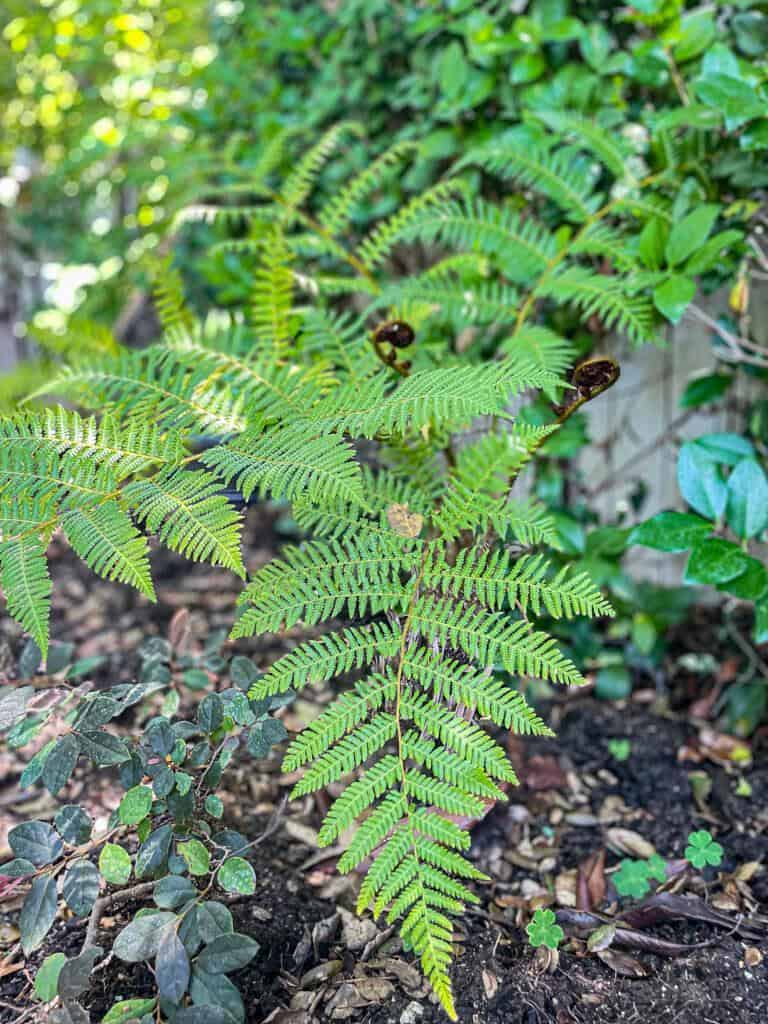
Tree ferns have a unique characteristic to match their name and can grow quite tall.
Tree ferns come in various shapes and sizes, but one thing they all have is their trunk. The trunks consist entirely of thin stems surrounded by thick roots that fibrously grow together to make an unusual shape for such plants! In addition, some tree ferns and fronds remain green throughout the year while others turn brown during autumn before falling off entirely in wintertime – much like palm leaves. Since these types of ferns grow tall, keeping that in mind when planting is essential.
Lady Hardy Fern
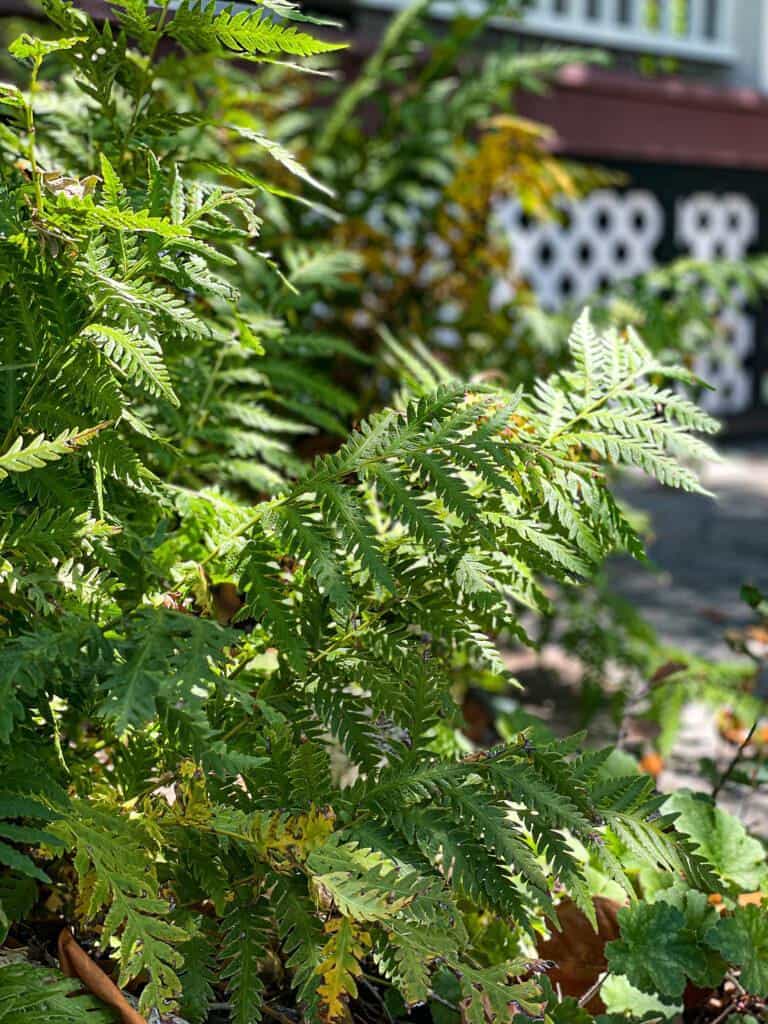
This pretty lady is a lush and fluffy plant that’s sure to please. She has lacy fronds up to 30″ tall, but her height might not be the most impressive part of this beautiful type of fern! Her 12-24 inch broad fronds make for an elegant addition in your garden or flower bed when fully opened out – This fern is the perfect choice for a dark shady corner.
Holly Fern
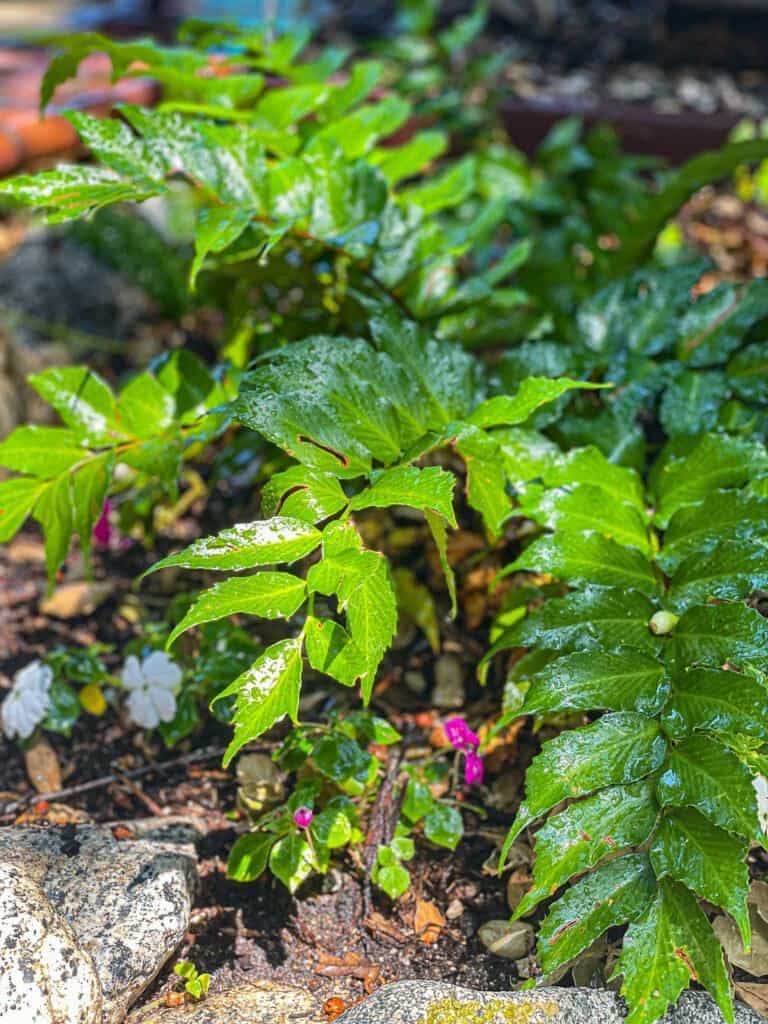
Holly fern is a popular indoor decorative plant. Its serrated, sharp-tipped leaves resemble holly leaves more than typical fern fronds. Holly fern can also be grown outdoors in shady areas, providing a beautiful backdrop for colorful flowers.
Asparagus Fern
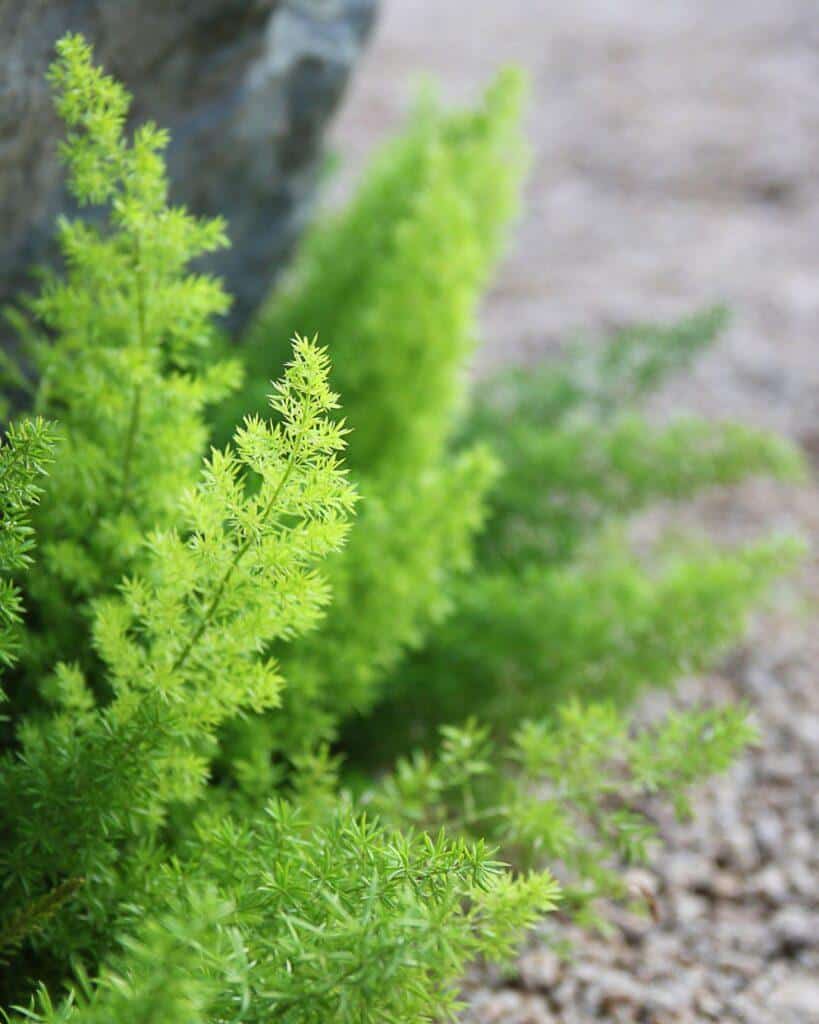
This attractive fern is closely related to the vegetable. Asparagus ferns can be grown indoors or outdoors, often in hanging baskets or pots. Asparagus fern plumes have a soft and fuzzy appearance and are often used to add height and density to floral arrangements. For warning, the roots of this fern can be invasive.
Other popular types of fern plants include:
- Christmas Fern
- Lady Fern
- Osmunda Fern
- Wood Fern
- Bird’s Nest Fern
- Button Fern
- Rabbit’s Foot Fern
- Staghorn Fern
- Cinnamon Fern
- Ostrich Fern
If you are looking for a great place to buy fern plants, check out Holland Bulb Farms.
Where do Ferns Grow Best?
Once you’ve chosen the types of ferns you want to grow, you may wonder where they will grow best and how to plant and care for them. This can vary by the fern you choose, so look up details for your plants.
Most ferns prefer partial to full shade, such as when light filters through trees. Some ferns can handle more sunlight but may need to be watered more frequently. Ferns most often grow in humid areas or near water sources. However, I live in California, which is relatively dry, and they do very well with a little extra watering.
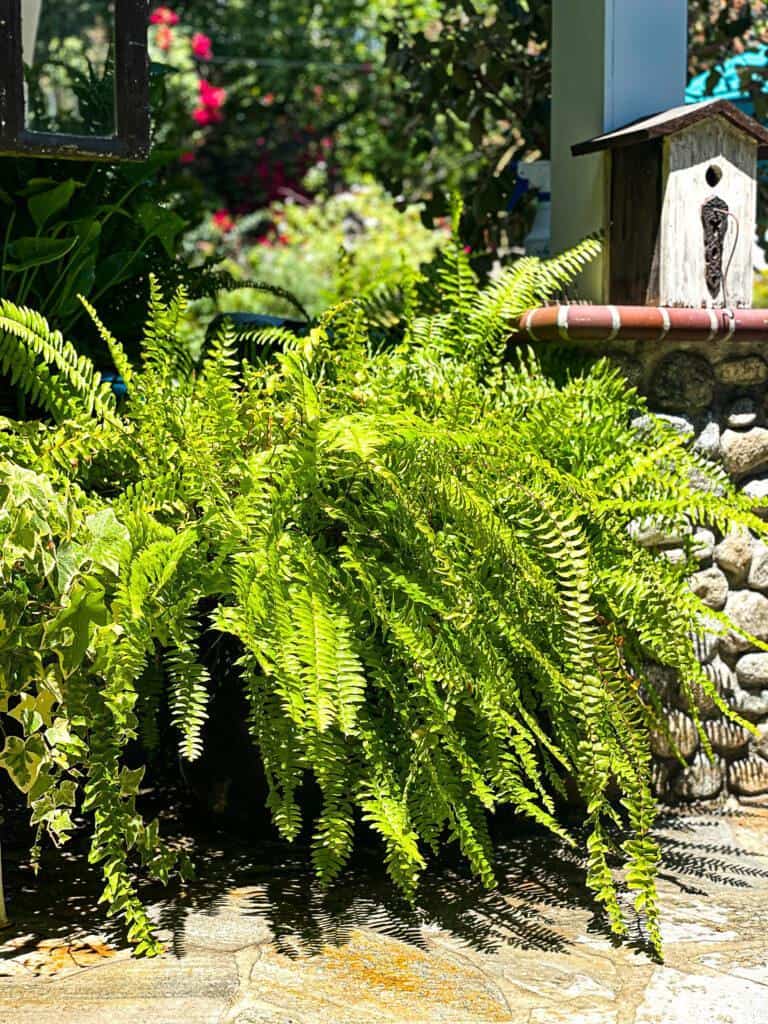
Growing Ferns Outside
Ferns are very versatile and can be grown outdoors in several different ways. They are often found in hanging baskets or pots near a patio or deck. They also work well when planted directly in the ground in landscaping or flower beds to create ground cover underneath taller plants or as a pretty backdrop to colorful annuals and perennials.
For best results, plant ferns in early spring after the last frost. They prefer moist, slightly acidic, well-draining soil. Before planting, mix in organic compost to give fern plants their best start.
To plant ferns outdoors, first, dig a hole as deep as the root ball and two times as wide. Next, carefully remove your fern from its pot and place it in the hole. Try not to disturb the roots. Finally, fill the gap with soil.
Growing Ferns Indoors
Ferns are a popular type of houseplant and generally do well growing indoors.
When choosing ferns as houseplants, it is best to use tropical varieties. Keep in mind that ferns prefer filtered light and moderate to high humidity. If indoor humidity is too low, it may be difficult for ferns to thrive. This is particularly true during the winter months.
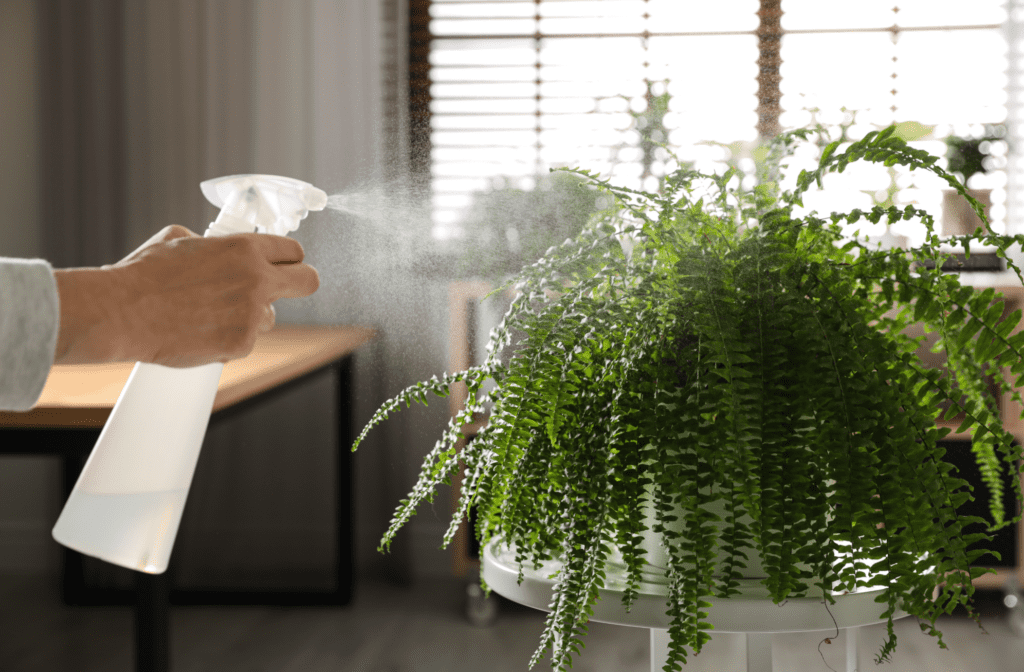
To ensure ferns stay moist when growing ferns indoors, I can share a few different tips. First, it is best to keep ferns constantly moist, so water or mist ferns daily. Another way to keep ferns moist is to place growing containers on a tray filled with pebbles and water. The water should not quite reach the bottom of the containers to keep it from soaking through the bottom but will help create a humid environment. A third option is to keep a humidifier running nearby.
When growing ferns indoors, use a fern-specific potting soil mix. If plants begin to outgrow their container, repot to a larger one to keep them healthy and growing.
Caring for Ferns
Ferns are pretty easy to grow, so there isn’t much care needed.
They are slow-growing plants, so keep in mind that it can take several years for a fern plant to reach its full size, but this can vary depending on your type of plant. However, one of my tricks is to add a few tablespoons of baking soda to a bucket of water to feed them. They love this.
My second trick is Epsom salts. I throw a small handful around the base of the plant and then water them well.
It is crucial to keep ferns moist, so water regularly and not let the soil dry out completely.
When growing ferns outdoors, add a layer of mulch on top of the soil to help keep the roots cool and dry.
Once established, some types of ferns spread quickly and can get out of hand if not managed properly. They can be split or transplanted to keep from becoming overgrown in one area.
There are not many pests or diseases to worry about when growing ferns. The only thing you may encounter are slugs, which like to feed on the fronds. There are many methods to choose from for keeping slugs off your garden plants.
Ferns are a great addition to any garden and can be easy to care for with little knowledge. Be sure to subscribe to my blog for more tips like this so you can have the best-looking garden in your neighborhood!





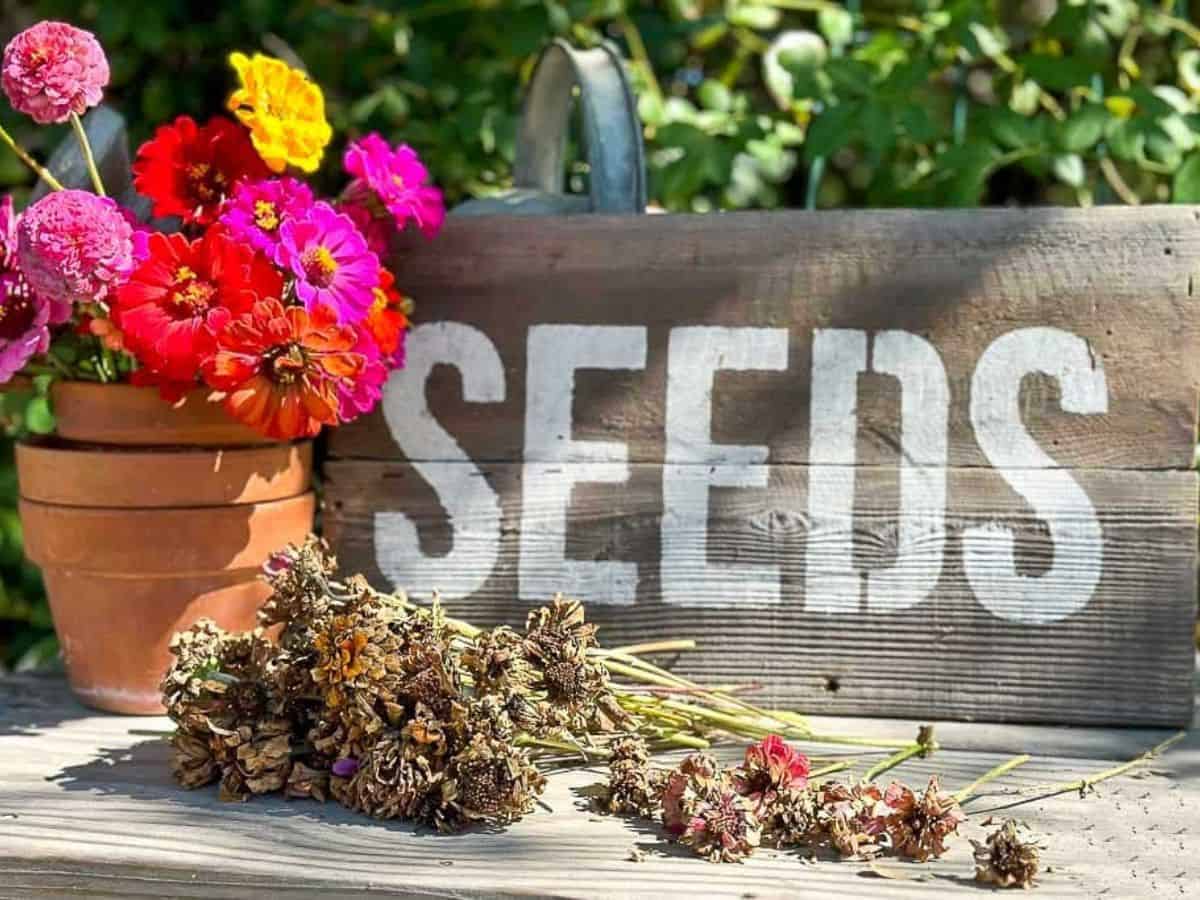
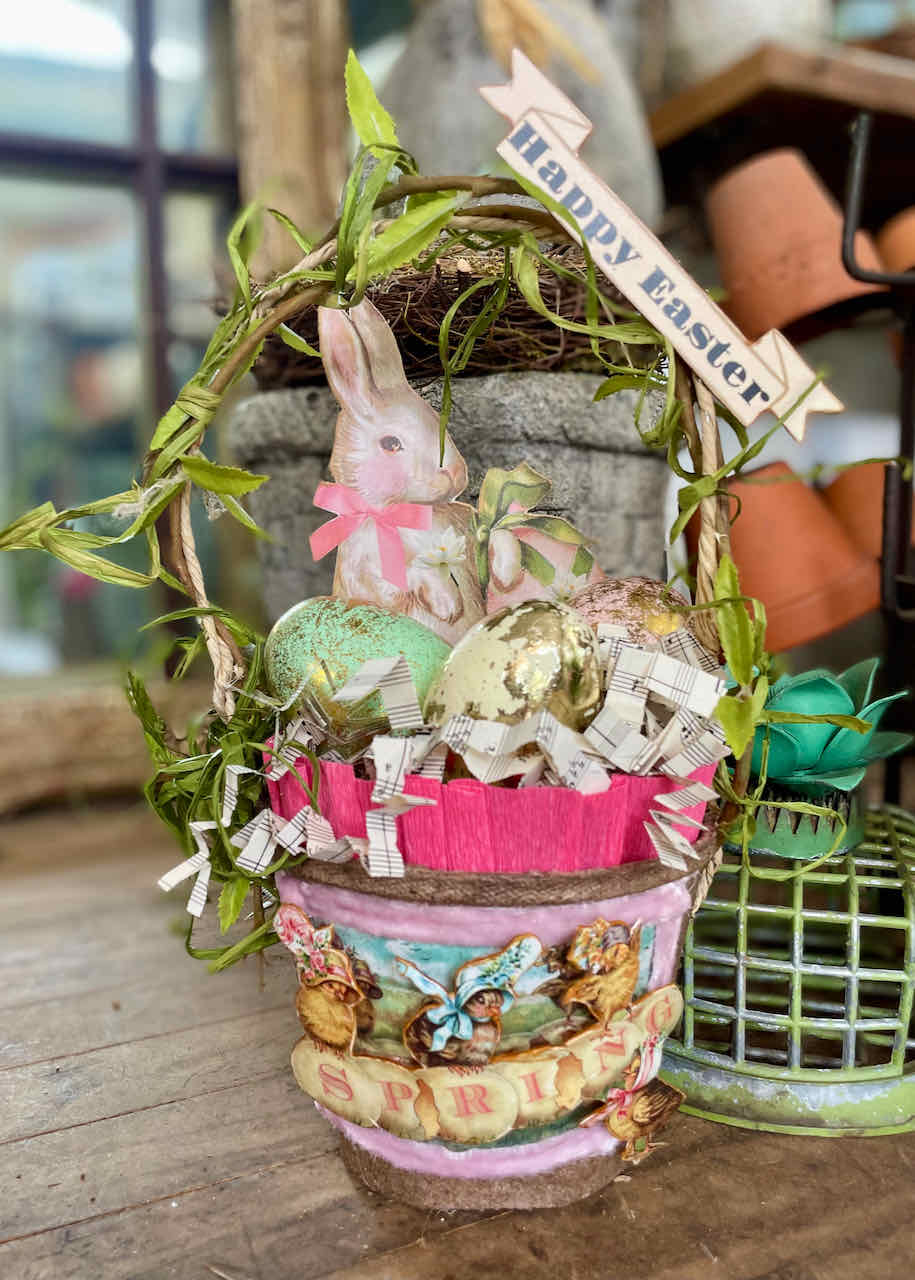
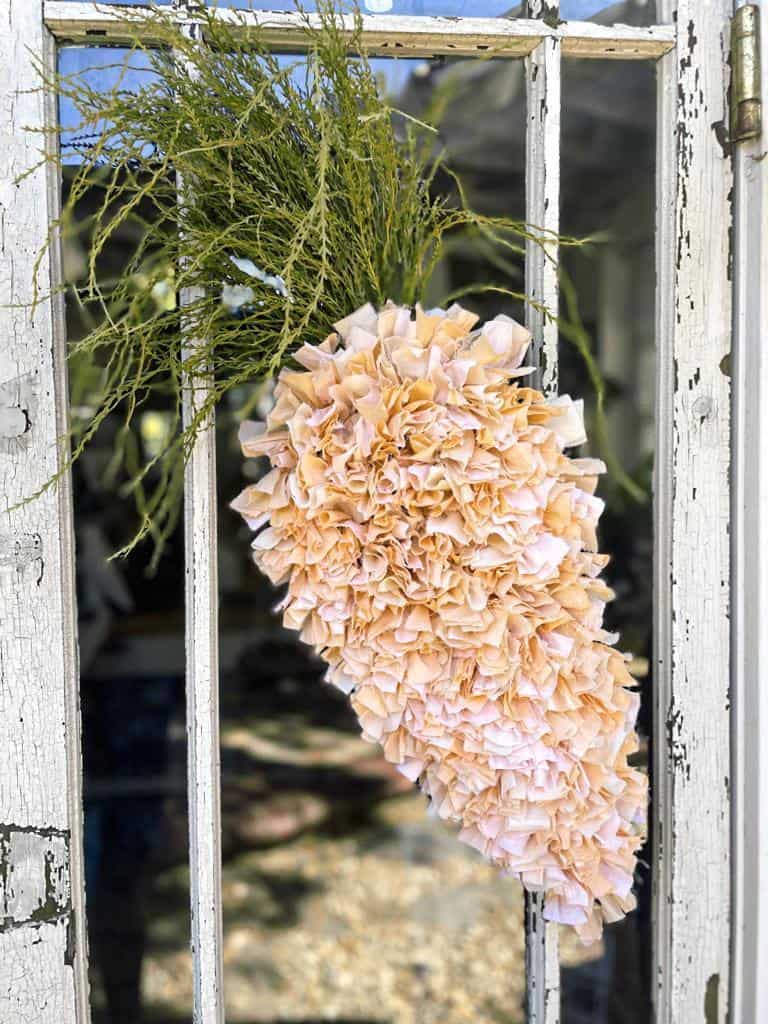
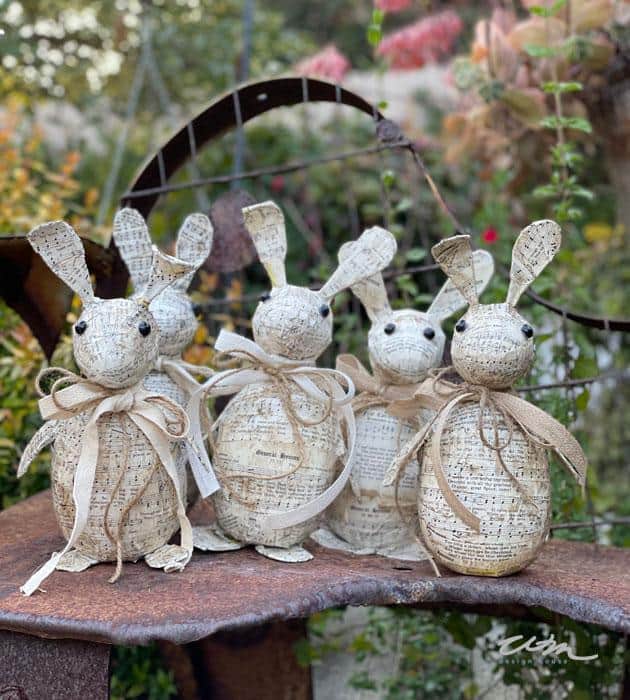
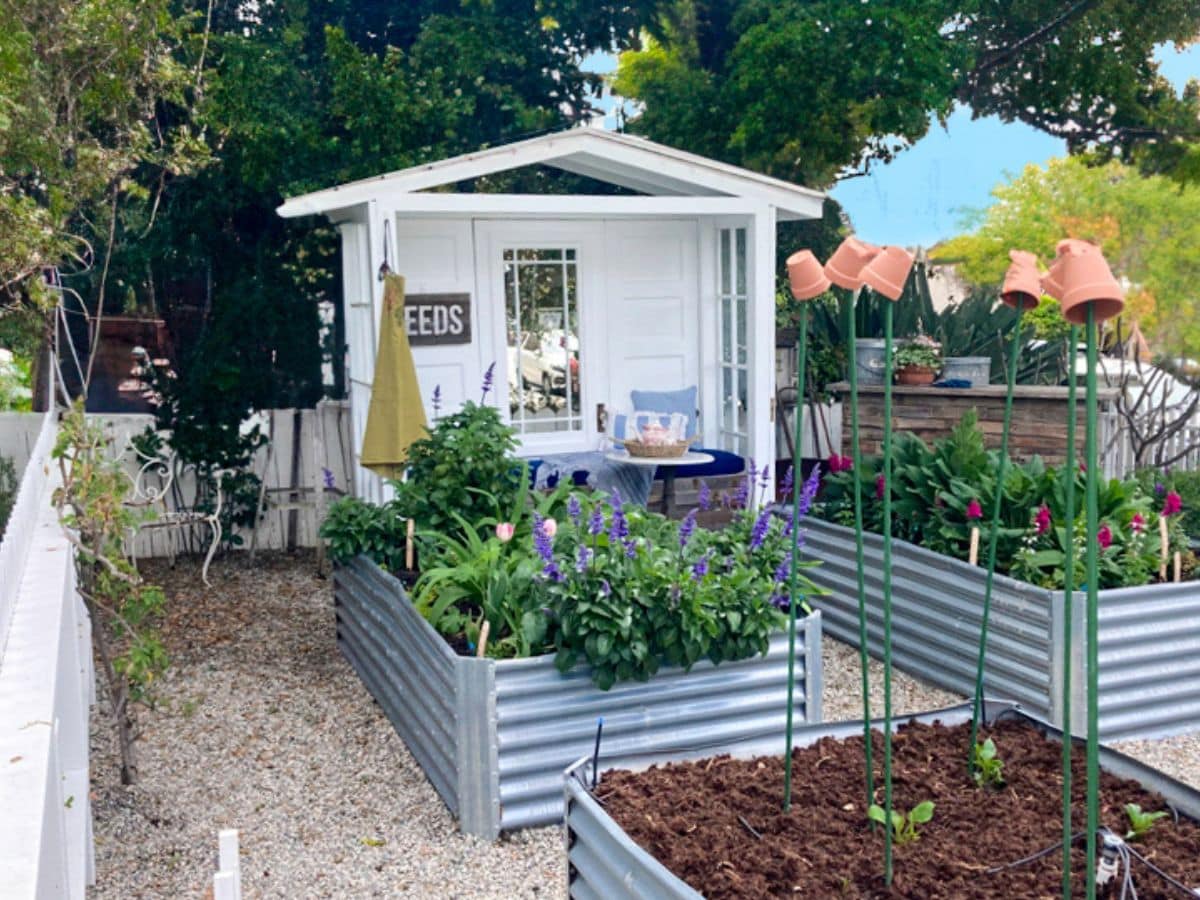
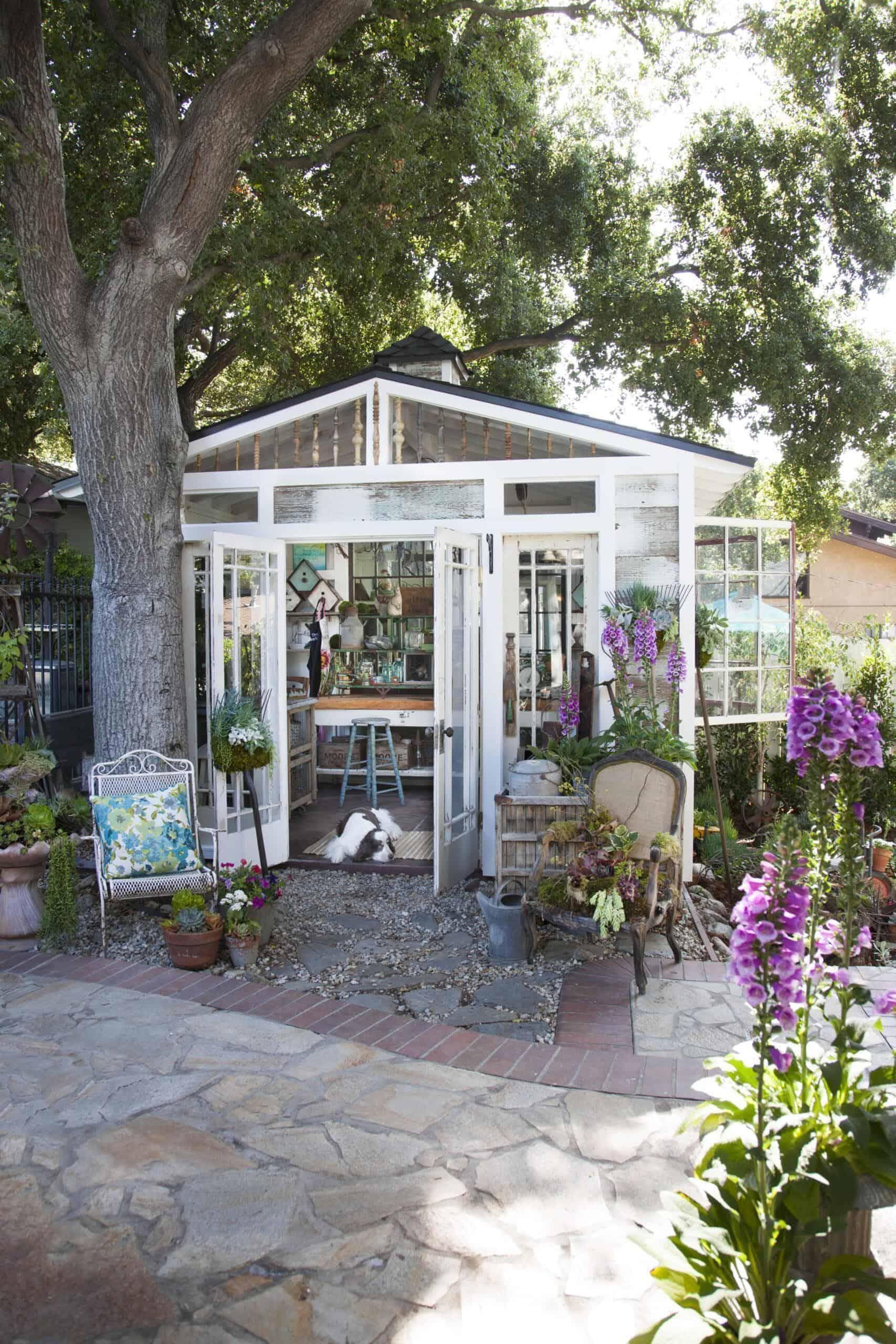
These ferns are beautiful. I have been trying to add more greenery to my home and I like that ferns seem to be low maintenance. I will have to look at adding some of these around my house.
This is so informative Wendy! Can’t wait to share it tomorrow on my Saltwater Sounds post.
Thank you so much Kim. I love ready your Sunday posts. I appreciate you sharing my link.
So many good tips, Wendy! I love having ferns! They are fairly easy to grow and seem to love the Michigan summers! Thanks for sharing!
Thank you Kim, I am glad you enjoyed the post. Thanks for stopping by.